Table of contents
Fresh organic chives are best used raw. If you want to store them, freezing them will preserve their flavor better than drying them.
Use in the kitchen
Chives smell and taste mildly onion-aromatic. Compared to other species from the genus Allium (leek), they have a more delicate taste. This makes them a popular fresh kitchen herb. All parts of the plant are edible: leaves, bulbs, flowers and seeds. The bulbs have the most intense flavor, but are less spicy than the kitchen onion.
Can you eat chives raw? The spice is best used fresh or frozen. Dried or freeze-dried, it only has a fraction of its original flavor. It is best to add the fresh greens after cooking.
The so-called scallops taste particularly delicious with potatoes or as a fresh, spicy spread on bread. Chives are suitable for garnishing soups, sauces, salads and raw vegetables, for flavoring remoulade, dips, vegan herb curd and vegan herb butter or as a seasoning in pestos, vegetable strudels, bread mixes and patties. Well-known chive dishes include green sauce (Frankfurter or Kasseler recipe) or potato dishes.
The flower buds taste good in vegetable dishes. Once in bloom, they can be used as decoration or as pickles in walnut oil, vinegar or brine. The flowers tend to be dry and therefore less popular than other edible flowers, such as those of mallow or nasturtium.
The onions are rarely thicker than 10 mm and can be used as mini spring onions, including the tubular leaf. The spicy-tasting onions are used fresh, as long as they are crisp and juicy.
The tender, young, unripe seeds add a touch of flavor to salads and raw foods. They can be marinated in herb oil or eaten as a vegetable pickled like capers. Ripe seeds can be dried and used asa pepper substitute and ground in a pepper mill. For raw foods in winter, the seeds can be germinated to produce fresh sprouts.
Vegan recipe for spring salad with chives
Ingredients (for 2 people): 60 g lamb's lettuce, 10 g fresh chive rolls, 10 g young dandelion leaves, 10 g young yarrow leaves, 10 g young nettle leaves, 5 cherry tomatoes, quartered, 2 chives, finely chopped, 2 chive flowers for decoration. If available, some young unripe chive seeds to sprinkle on top. For the dressing: 1 teaspoon mustard preparation, 1 tablespoon balsamic vinegar, 1 tablespoon walnut oil.
Preparation: Cover the nettle leaves with a kitchen towel and roll over them with a rolling pin so that the stinging hairs break and lose their effect. Wash and chop the vegetables as needed. Mix the ingredients for the dressing, mix with the leafy vegetables and place on two plates. Decorate the spring salad with the tomato pieces, onion rings, flowers and chive seeds.
Recipe for fresh chive tea (cup soup)
To make the tea, pour 1 tablespoon of freshly chopped chives and ½ teaspoon of freshly grated turmeric into 250 ml of boiling drinking water. After 10 minutes, strain through a tea strainer and season to taste with vegetable stock or sweeten with honey.
Vegan chive recipes can be found under the note: " Recipes that have the most of this ingredient ".
| Not only vegans or vegetarians should read this: Vegans often eat unhealthily. Avoidable nutritional errors. |
Purchasing - Storage
Chives can be bought cut and dried. When processed in this way, they are available in conventional or organic quality, rarely in raw food quality (raw quality). The tubular leaves are available fresh as bunches or in pots. The raw spice often comes from regional and organic cultivation. An alternative to fresh or dried spices are freeze-dried and ready-to-cook products.
In the wild, wild chives are best spotted in early spring when the tender green leaves appear. Later, it is more difficult to find them when they are growing among tall grass. (Note: The similarity to grass and rushes has given them the name grass leek or rush leek.) The leaves are harvested during the growing season. In warm and sheltered locations, this can be almost all year round, from February to December. Ripe seeds can be harvested from July to August. 5
Chives can be found in all standard supermarkets such as Coop, Migros, Denner, Volg, Spar, Aldi, Lidl, Rewe, Edeka, Hofer or Billa as well as in the organic supermarkets Denn's Biomarkt or Alnatura. You can also buy the fresh greens at weekly markets, in delicatessens, in health food stores, in organic shops, directly from the farmer or via a subscription box (seasonal box, green box).
The availability of chives varies depending on the size of the store, catchment area, etc. If you are interested, click on our recorded food prices for the DA-CH countries (above under the ingredient image). There you will find current prices from various supermarkets and their price development.
Storage tips
Fresh chives can be stored in the fridge for a short time. To do this, wrap the so-called cuttings in a damp cloth, place them in a plastic bag or put them in a plastic or glass box. Bunched chives can be placed in a glass of water. The fresh water should only just cover the bottom, as the leaves quickly become saturated.
If you want to preserve the fresh greens for longer, freezing them is a good option, as chives lose a lot of their flavor when dried. Cut the fresh, dabbed-dry tubes into fine rolls and put them in a sealable box in the freezer. The frozen spice can be sprinkled out as needed or removed with a spoon. Another option is to freeze them with water or rapeseed oil in ice cube trays for practical herb portions.
Wild
Allium schoenoprasum can be found growing wild on calcareous, moist soils, up to alpine locations. Typical locations are fens, stream banks, lake shores, moist meadows, light forests, and rocky and sandy grasslands. 3,5,6,17,18 Sometimes it is not always possible to clearly identify the exact variety or species, as the plant characteristics can vary greatly. 18 The main flowering period is from April to July. 3
Ingredients - Nutritional values - Calories
1 g of chives has a calorie content of 0.3 kcal. Do chives contain carbohydrates? The main nutrients are 0.01 g fats, 0.04 g carbohydrates and 0.03 g proteins. What vitamins do chives have and does chives contain vitamin K? It is particularly rich in vitamin K (2.13 µg/1g). At 0.58 g/1g, it has a medium vitamin C content. Do chives contain calcium? The herb contains small amounts of calcium at 0.92 mg/1g. 6.7
Higher amounts of vitamin K can be found in raw garden cress (5.42 µg/1g), fresh parsley (4.54 µg/1g) or raw basil (4.15 µg/1g). Spring onions have a comparable content of 2.07 µg/1g. 6,7
Herbs and wild plants that are particularly rich in vitamin C include raw garlic mustard (2.61 mg/1g), common thyme (1.6 mg/1g), parsley (1.33 mg/1g), fenugreek leaves (1.26 mg/1g), small sorrel (1.17 mg/1g), fresh dill (0.85 mg/1g) or raw garden cress (0.69 mg/1g). 6.7
Better sources of calcium than chives are stinging nettles (4.81 mg/1g), cow parsley (4 mg/1g), savory (3.49 mg/1g), oregano (3.1 mg/1g) or sage (2.66 mg/1g). 6,7
Researchers identified 30 components in the volatile essential oil, which make up around 60% of the oil. Sulfur compounds, which make up 16.8% of the oil, are responsible for the characteristic taste. 10 Other important components are anthocyanins, flavonoids, phenols, tannins and carotenoids. 8
Are you interested in other chive nutrients or chive vitamins? The nutrients of chives and the vitamins are listed in our tables.
The complete ingredients of chives, the coverage of the daily requirement and comparison values with other ingredients can be found in our nutrient tables. In the article Nutrients explained you will get a detailed insight into the topic.
Effects on health
Do chives have an effect on health? There are numerous scientific studies and reviews on this culinary herb. Often these are purely laboratory studies ( in vitro) or animal studies, less often clinical studies on humans. The effects of the studies listed must therefore be confirmed by clinical studies.
A scientific review shows a diverse pharmacological potential and confirms some assumptions in traditional medicine. 8 anti-inflammatory, 8,9 anti-cancer, 8,15 antioxidant, antihelmintic (acting against worms), antimycotic (acting against fungi), antibacterial and blood pressure lowering properties were proven. 8
In further studies ( in vitro), it was observed that Allium schoenoprasum leaf extract is a promising antioxidant. 14 The highest antioxidant activity is found in the leaves. This is due to the high antioxidant enzyme activity and the presence of significant amounts of non-enzymatic antioxidants such as flavonoids, vitamin C and carotenoids. 7
The effect of Allium schoenoprasum on the formation of kidney stones was studied in the laboratory ( in vitro). Thanks to potassium, phenols and flavonoids, the herb inhibits the growth of kidney stones and dissolves them. 14 This is where an in vivo study on rats comes in, which states that chives could be an alternative for treating tartar. The scientists observed the development of the calcium levels in the kidneys and urine, the oxalate levels in the urine and the serum creatinine levels. They found significant differences between the treated and the control group. 16
In a study on mice ( in vivo) with induced brain damage, they were treated orally with leaf extract of Allium schoenoprasum for seven days. The results showed an improvement in brain function and a neuroprotective effect. 13
Dangers - Intolerances - Side effects
Is too much chive unhealthy? Negative effects rarely occur, as people usually consume small amounts of the spice. Excessive consumption can cause digestive problems. 8
Use as a recognized medicinal plant
In comparison to garlic ( Allium sativum), Allium schoenoprasum is not a recognized herbal medicinal product according to the HMPC ( Committee for Herbal Medicinal Products). As a committee of the EMA ( European Medicines Agency), the HMPC has sole authority at European level to assess the approval of herbal medicinal products. 16
Folk medicine - natural medicine
How healthy are chives? Chives are rarely used medicinally, 2,5 although they have similar properties to garlic, only in a milder form. 5 In Indonesia they are traditionally used to lower blood pressure and in East Asia to relieve colds, flu and pulmonary edema. 8 They are used in folk medicine to treat sore throats and pain caused by sunburn. 8,9 The spice is considered to be effective against the growth of bacteria. It can be used externally against warts and corns. It is said to have mild cholesterol-lowering and blood-thinning properties. 3
Can chives be good for your health? In the kitchen, they are used as a digestive, appetite- stimulating and generally strengthening herb. 3
Ecological footprint - animal welfare
The ecological CO 2 footprint of chives is 0.32 kg CO 2 eq/kg. This is similar to that of other herbs such as dill (0.37 kg CO 2 eq/kg) or parsley (0.37 kg CO 2 eq/kg). 23 There is no precise data on the amount of water required to produce 1 kg of chives.
A study on the accumulation of heavy metals in onion-like plants grown hydroponically showed that the plants are very likely to absorb and store these substances. This was tested on chives, but also on garlic and onions. The roots in particular showed an increased uptake of heavy metals, sometimes even in excessive amounts (hyperaccumulation). 24
In conventional agriculture, synthetically produced herbicides and pesticides are often used to combat pests. However, these can also be found in some of the end products, as a study from China has shown. In some cases, levels were even found that exceeded the maximum permitted level for pesticide residues. 25 Accordingly, when purchasing products, you should opt for organically grown products, as the use of such herbicides is not permitted there. For example, nematodes could be used to combat pests; these so-called beneficial organisms have already proven to be helpful in the fight against thrips in a study in Germany. 26
Worldwide distribution - cultivation
Allium schoenoprasum grows in the Euro-Siberian and North American regions. 6 It can be found in most parts of Europe, North America and Asia as far as Japan and the Himalayas.
Cultivation -
Harvest Chives, also known as Brislauch or Grusenich, are adaptable plants that can cope with both sandy and clayey soils and wet conditions. They have few requirements when it comes to pH levels, as long as they are not very acidic. However, they prefer to grow on well-drained, moist substrates in partial shade. The hardy, perennial plant is suitable as a pot plant on the balcony or windowsill. 2,4,5
Chives are very tolerant of regular harvesting and young leaves grow continuously. After flowering, they are cut back to the ground, which encourages the formation of new leaves. 2,5 The secondary bulbs, which grow close to the mother bulb, can also be harvested and used as a spice in the kitchen. 3
In autumn, the plants can be transplanted to a sheltered location or placed in a greenhouse. However, the year-round harvest that this enables weakens the plant. 5 In autumn or spring, you can also divide chive bulbs to encourage growth. 2.5
As companion plants, they can deter weeds, pests and diseases. Chives can be grown well near roses, carrots, beets and chamomile, but are a poor companion for alfalfa, as the plants inhibit each other's growth. Chives should not be planted near legumes, as they reduce their growth. 5
In some countries, the popular culinary herb is susceptible to the larvae of the onion fly. If it gets too wet, it can get mildew or onion rot. 2
The cultivation of pot chives is carried out in two steps: root ball cultivation and forcing. The plants sprout in a short period of 7-14 days until they are ready for sale. If the starting material is healthy, the tubular leaves grow without problems. When grown outdoors, higher requirements are to be expected in terms of plant protection, weed control and fertilization. 25
Small pot systems allow for optimized use of space in the greenhouse and make weed control easier. Outdoor cultivation is cost-effective and is suitable for seasonal market supply, supply to freezers or drying plants, and for the cultivation of rhizomes for forcing. 26
Growing organic potted chives in particular seems to be more difficult, with consistent quality. As an end customer, you can tell this from the fact that many potted herbs may be available in organic quality in retail stores, but chives may not be. During the short growing phase, everything has to be right so that the end product is fresh, green and full-bodied.
Possible confusion
The tubular leaves of the non-poisonous wild garlic ( Allium vineale) are similar to those of chives. They are also edible and have a subtle garlic aroma.
Further information
Chives ( Allium schoenoprasum) is a species of the genus Leek and belongs to the subfamily of the Allium or Onion family.
Alternative names
Other names are grass leek, rush leek, bris leek, Grusenich, Jakobszwiebel or Schnittling.
Latin alternative names are Cepa schoenoprasa (L.), Ascalonicum schoenoprasum (L.), Porrum schoenoprasum (L.), Schoenissa schoenoprasa (L.), Allium schoenoprasum subsp. euschoenoprasum or Schoenoprasum vulgare. 20
Chives in English? In English, the culinary herb is called chives, sometimes wild chives.
Other uses
The flowers are decorative cut and dried flowers. The fungicidal pressed juice of the plant is used against scab and mold 5 as well as against (clothes) moths, insects and moles. 3 With its insect-repellent properties, the plant can be useful for pest control in gardens. 8
Bibliography - 20 Sources (Link to the evidence)
| 2. | Pfaf.org Allium schoenoprasum – L. |
| 3. | Infoflora.ch Allium schoenoprasum L. Schnittlauch. |
| 4. | Hortipendium.de Schnittlauch. 12. 2021. |
| 5. | Efloras.org Allium schoenoprasum Linnaeus, Sp. Pl. 1: 301. 1753. |
| 6. | USDA (United States Department of Agriculture). Nährstofftabellen. |
| 7. | Diet-Health.info Nährstofftabellen. |
| 8. | Hashimoto S, Miyazawa M, Kameoka H. Volatile flavor components of chive (Allium schoenoprasum L.). J Food Science. 1983;48(6):1858-1859. |
| 9. | Singh V, Chauhan G, Krishan P, Shri R. Allium schoenoprasum L. A review of phytochemistry, pharmacology and future directions. Natural Product Research. 2018;32(18):2202-2216. |
| 10. | Parvu AE, Parvu M, Vlase L, Miclea P, Mot AC, Silaghi-Dumitrescu R. Anti-inflammatory effects of Allium schoenoprasum L. leaves. J Physiol Pharmacol. 2014;65(2):309-315. |
| 13. | Štajner D, Čanadanović-Brunet J, Pavlović A. Allium schoenoprasum L., as a natural antioxidant. Phytother Res. 2004;18(7):522-524. |
| 14. | Protective effects of chives leaves (Allium schoenoprasum, L.) infusion against ethylene glycol and ammonium chloride induced nephrolithiasis in rats. J App Pharm Sci. Published online 2017. |
| 15. | Singh V, Krishan P, Shri R. Antioxidant-mediated neuroprotection by Allium schoenoprasum L. leaf extract against ischemia reperfusion-induced cerebral injury in mice. Journal of Basic and Clinical Physiology and Pharmacology. 2018;29(4):403-410. |
| 16. | Arzneipflanzenlexikon.info Herbal Medicinal Product Committee (HMPC). |
| 17. | Bown D. Kräuter. Die grosse Enzyklopädie. Anbau und Verwendung. München: Dorling Kindersley; 2. Auflage. 2015. |
| 18. | Pahlow M. Das grosse Buch der Heilpflanzen. Gesund durch die Heilkräfte der Natur. Hamburg: Nikol Verlagsgesellschaft mbH & Co. KG; 8. Auflage. 2019. |
| 20. | Kremer BP. Mein Garten – Ein Bienenparadies. Bern: Haupt Verlag; 2. Auflage. 2018. |
| 23. | CONCITO. The Big Climate Database, version 1. 2021. |
| 24. | Soudek P, Kotyza J, Lenikusová I, et al. Accumulation of heavy metals in hydroponically cultivated garlic (Allium sativum L.), onion (Allium cepa L.), leek (Allium porrum L.) and chive (Allium schoenoprasum L.). Journal of Food, Agriculture & Environment. 2009; 761-769. |
| 25. | Wang S, Wang Z, Zhang Y, et al. Pesticide residues in market foods in Shaanxi Province of China in 2010. Food Chemistry. 2013; 2016-2025. |
| 26. | Jung K. Integration biologischer Pflanzenschutzverfahren für den ökologischen Gemüseanbau: Bekämpfung von Thripsen in Zwiebeln, Porree und Schnittlauch. Bundeanstalt für Landwirtschaft und Ernährung. 2003. |

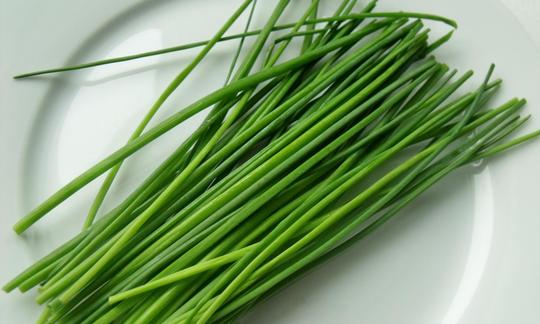

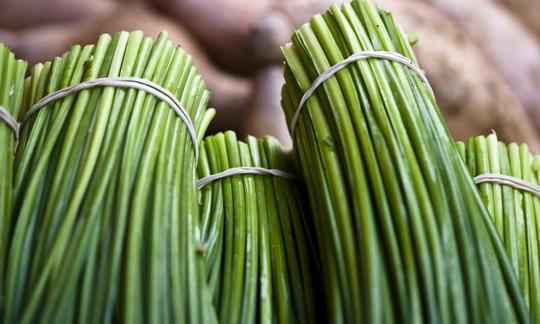



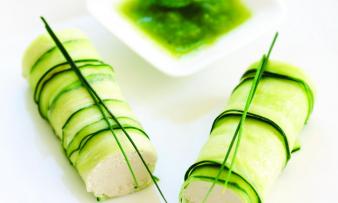
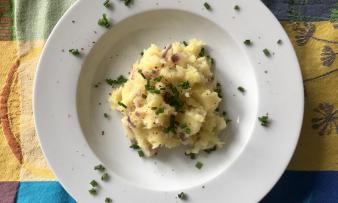
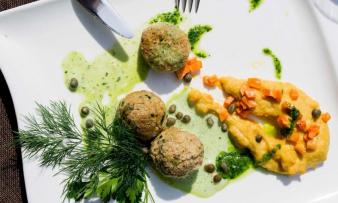





Comments